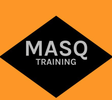|
By: Regan Quaal When discussing lower body training, it’s not uncommon to hear athletes bring up the following – “ugh, deadlift KILLS my back!” or “whenever I go heavy on back squats, my lower back starts to bug me…” This even comes from athletes who are relatively competent in the movements, but, for some reason, can’t withstand much of a load when training. They’ve tried RDLs and Hip Thrusts at the end of their sessions because they’ve been told to work on activating the posterior chain (mainly glutes and hamstrings), but they still come away with lower back pain and tightness, along with a negative outlook on heavy lower body training. Addressing a lack of glute and hamstring development isn’t easy, but it’s very important because hip extension is the basis of virtually every movement performed in sport and life. Most trainers address these issues by prescribing glute activation exercises in the warm up, like clamshells. Even though these type of exercises have a time and place, they don’t cause enough stress for any real adaptations in the posterior chain to take place. The Reverse Hyperextension is the perfect tool for individuals lacking posterior chain development because it adequately stresses the hamstrings and glutes while minimally stressing the lower back. In the 1970’s, the great Louie Simmons invented the Reverse Hyper machine. He used it to develop his posterior chain as he was recovering from major back injuries. Below are many reasons why the Reverse Hyper should be regularly implemented in an athlete’s training program.
Unfortunately, many gyms are not lucky enough to have a Reverse Hyper machine. Below, I have attached a video of how an athlete can utilize standard gym equipment to mirror the motion of the Reverse Hyper machine to achieve similar results for posterior chain loading and activation.
0 Comments
Leave a Reply. |
Categories
All
Archives
February 2023
Regan QuaalHead Strength & Conditioning Coach at Shakopee High School |

 RSS Feed
RSS Feed